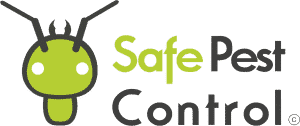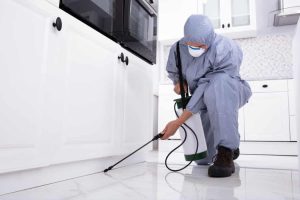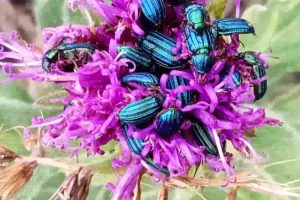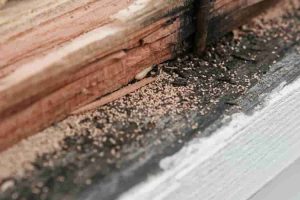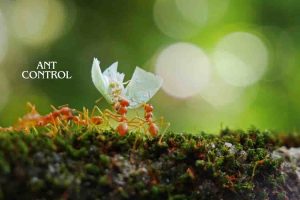When it comes to food processing, safety is our top priority. Pests like rodents, insects, and birds can pose serious challenges in maintaining food safety. To prevent infestations, regular inspections and proper storage of food are essential. This ensures that pests don’t have access to food and shelter within our facilities.
Rodents, such as rats and mice, are attracted to food premises because they provide easy access to food and water. Insects like cockroaches and flies can also be a nuisance, contaminating food with their presence. Birds, particularly pigeons, are another common pest that can cause damage and hygiene issues.
Maintaining a pest-free environment in food processing facilities is crucial. We can achieve this by implementing effective strategies like installing mesh screens on windows and doors, using self-closing doors, and storing food in airtight containers. These measures help us keep pests at bay and ensure the safety of the food we process. For more in-depth strategies, visit Food Standards Australia New Zealand’s guide on controlling pests.
Identifying Pests in Food Processing Facilities
Identifying pests in food processing facilities is crucial for maintaining hygiene and ensuring compliance with regulations. We focus on common insects and rodents, and the signs that indicate their presence so that appropriate measures can be taken quickly.
Common Insects and Rodents
In food processing facilities, rodents like rats and mice and insects such as cockroaches, flies, ants, beetles, and moths are the most frequent invaders.
Rats and mice are attracted to the plentiful food sources and can cause serious damage by gnawing on packaging and contaminating food with their waste.
Cockroaches pose a significant health risk as they can spread bacteria and viruses onto food and surfaces. Flies also spread pathogens, while ants can contaminate food products and invade storage areas. Beetles and moths target stored grains and other dry goods, causing spoilage and financial loss.
Signs of Infestation
Recognizing signs of infestation quickly can help reduce damage. Common signs include:
- Droppings: Small, dark droppings from rodents or insects.
- Gnaw Marks: Evidence of gnawing on packaging or structure.
- Dead Insects: Finding dead insects around the facility.
- Shed Skins or Casings: Indicate the presence of beetle or cockroach larvae.
- Unusual Odors: Musty or oily smells, especially in hidden corners.
- Nests: Rodent nests made from shredded materials.
By consistently monitoring for these signs, we can maintain a pest-free environment in our food processing facilities.
Health Risks and Regulatory Implications
Dealing with pests in food processing isn’t just about maintaining a clean environment; the health risks and regulatory consequences can be severe. Understanding foodborne diseases and compliance with regulations is crucial to our industry.
Foodborne Diseases and Contamination
Pests in food processing areas often carry harmful bacteria and pathogens. These can include Salmonella, E. coli, and other dangerous microorganisms. When pests contaminate food, they can cause foodborne illnesses.
For instance, Salmonella infections can lead to severe gastrointestinal issues. E. coli contamination can also cause serious health problems. It’s essential to address these risks by implementing stringent pest control measures, such as installing mesh screens and weather strips on doors to prevent pest entry.
Food safety relies on our efforts to minimize contamination. Regular inspections and proper storage of foods are vital to prevent infestations. Using self-closing doors, air curtains, and keeping doors closed when not in use can significantly reduce the chance of pests entering processing areas.
Regulation Compliance and Legal Consequences
Compliance with food safety regulations is mandatory. Failure to do so can result in significant penalties, fines, and even closure of facilities. In the United States, the Food Safety Modernization Act (FSMA) empowers the FDA to enforce stringent measures.
Businesses must adhere to guidelines set by regulatory bodies to avoid legal consequences. For example, providing and maintaining proper pest control devices is part of the compliance requirements.
Non-compliance can lead to fines and legal actions. The FDA conducts regular inspections, and violations can result in mandatory recalls or shutdowns. It is our responsibility to stay updated with these regulations and ensure that we meet them consistently.
By understanding the health risks and regulatory implications, we can better protect our products and the health of our consumers.
Integrated Pest Management Strategies
Integrated Pest Management (IPM) is essential in food processing to prevent infestations by combining several proactive techniques. These include maintaining cleanliness and monitoring pest activity to ensure a pest-free environment.
Sanitation and Exclusion Practices
Effective sanitation practices are crucial in pest control. By keeping areas clean, we remove food sources that attract pests like rodents and insects.
Food debris must be promptly cleaned, and spills should be wiped up immediately. Food storage areas should be well-maintained, with ingredients kept in sealed containers.
Exclusion practices focus on sealing entry points to prevent pests from entering the facility. This includes inspecting doors, windows, and vents, and installing screens when necessary.
We conduct regular inspections to identify and repair any structural damage that could allow pests inside. Employee training is also important so that everyone understands their role in maintaining hygiene and preventing pest entry.
Regularly scheduled cleaning tasks, such as sweeping, mopping, and waste disposal, are crucial. We also ensure that trash bins are sealed and emptied frequently to avoid attracting pests.
Monitoring and Documentation
Monitoring and documentation are vital components of IPM. We use tools like traps and sensors to detect pest activity early. Monitoring allows us to identify hot spots and implement targeted control measures.
Proper documentation helps track pest trends and the effectiveness of our strategies. We maintain detailed records of pest sightings, actions taken, and results achieved. This information is critical for evaluating the success of our IPM program and making necessary adjustments.
Regular inspections help us detect potential problems before they become severe. We conduct these inspections frequently and document our findings meticulously. This proactive approach ensures that we stay ahead of pest issues, maintaining a safe and clean environment.
Employee training includes educating staff on recognizing signs of infestations and proper reporting procedures. This collective effort ensures a comprehensive and effective pest management system in our facility.
Implications for Food Processing Businesses
Effective pest control in food processing facilities is crucial for maintaining brand reputation and consumer trust while also mitigating economic impacts.
Protecting the Brand and Consumer Trust
Maintaining a positive reputation is essential for any food processing business. Pests can lead to contamination, resulting in foodborne illnesses. These incidents can significantly damage a brand’s image and erode consumer trust.
Frequent pest sightings or infestations can quickly spread through word-of-mouth or social media, tarnishing our reputation. Implementing a strong pest management program helps ensure food safety and quality. This includes regular inspections, proper food storage, and waste management.
By adopting effective measures, such as installing mesh screens, self-closing doors, and ensuring doors remain closed when not in use, we protect both the business and our consumers.
Mitigating Economic Impacts
Pest infestations can lead to significant financial losses. Contaminated products often need to be discarded, impacting the bottom line. An effective pest management program helps prevent contamination, reducing waste and maintaining supply chain integrity.
Proper documentation and traceability of pest control measures are vital. Keeping detailed records can help identify problem areas and ensure compliance with health regulations.
Regular pest control treatments and maintaining clean facilities can also prevent long-term damage to the building and equipment, further safeguarding our investments. By managing these risks, we can focus on delivering safe, high-quality products to our customers.
On-Time Service

5 STAR SERVICE BASED ON 100+ GOOGLE REVIEWS
PET & FAMILY FRIENDLY TREATMENT

ALL YEAR-ROUND PROTECTION
Take Back Control Now
8
REASON TO CHOOSE SAFE PEST CONTROL
- Guarantee protection all year-round
- 30 Years Collective Experience
- An impeccable reputation across Sydney's Suburbs
- Certified treatments & written Warranty On all work carried out
- Family Owned & Operated
- Rated #1 Pest Control In Sydney NSW
- No Mess, No Smell
- Family & Pet Friendly Treatments
REQUEST A QUOTE
